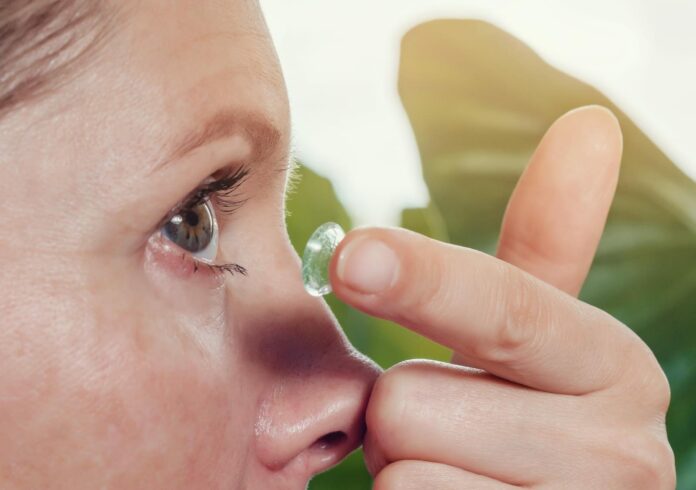A new study from the University of Portsmouth found that natural material could effectively clean contact lenses, crucial for millions of users worldwide. Hydroquinine found from specific tree bark shows promise in killing harmful bacteria like Pseudomonas aeruginosa, a common cause of eye infections in contact lens wearers. Unlike current solutions, hydroquinine can prevent the formation of bacterial clusters called biofilms on lens surfaces.
Researchers from the University of Portsmouth in England and Naresuan and Pibulsongkram Rajabhat universities in Thailand have studied the potential use of hydroquinine in contact lens solutions. Compared to two commercial solutions, they tested its ability to kill bacteria, prevent adhesion, and stop biofilm formation. Their study suggests hydroquinine could help develop new disinfectants to fight Pseudomonas aeruginosa bacteria.
Dr Robert Baldock from the School of Pharmacy and Biomedical Sciences at the University of Portsmouth said: “Commercially available disinfecting solutions, which are made up of several chemicals, can sometimes cause reactions with painful side effects. We hoped to demonstrate that new agents made from natural products may be an excellent option to limit or reduce the risk of contact lens contamination.”
“It is exciting to see how this research has progressed, from discovery to exploring potential applications.” He added
Corneal infections affect up to 3.5 million people yearly, leading to permanent eye damage and vision loss. Wearing contact lenses overnight or exceeding daily wear time doubles the risk of microbial keratitis, a leading cause of corneal blindness, according to the WHO.
Pseudomonas aeruginosa strains that are resistant to several drugs pose a severe threat as they are responsible for more than 2.8 million infections and around 35,000 deaths every year. Antimicrobial resistance arises from the evolution of bacteria resistant to therapy, creating difficulties in managing conditions.
Some strains of Pseudomonas aeruginosa are resistant to the standard medications trimethoprim and amoxicillin. Hydroquinine, known for treating malaria and nocturnal muscle cramps, is being studied for its drug-resistant properties.
Lead author Sattaporn Weawsiangsang, from the Faculty Of Allied Health Sciences at Naresuan University, is a visiting researcher at the University of Portsmouth: “Our initial findings suggest that soaking contact lenses in a multi-purpose hydroquinine solution is possibly helpful to prevent contamination and infection.
“However, further investigation is needed to determine whether hydroquinine itself also has adverse reactions or toxicity. We continue to test the compound on several cells, and the results are auspicious. This potential development could contribute to creating new disinfectants from natural products, effectively combating P. aeruginosa infections and reducing cases of corneal infections,” she added.
The study suggests that an organic compound derived from trees shows promise in preventing contact lens-related eye infections. This finding underscores the potential of natural substances in enhancing eye care. It highlights avenues for future research in developing preventive measures against such diseases.
Journal reference:
- Sattaporn Weawsiangsang, Nontaporn Rattanachak et al., Hydroquinine Enhances the Efficacy of Contact Lens Solutions for Inhibiting Pseudomonas aeruginosa Adhesion and Biofilm Formation. Antibiotics. DOI: 10.3390/antibiotics13010056.
